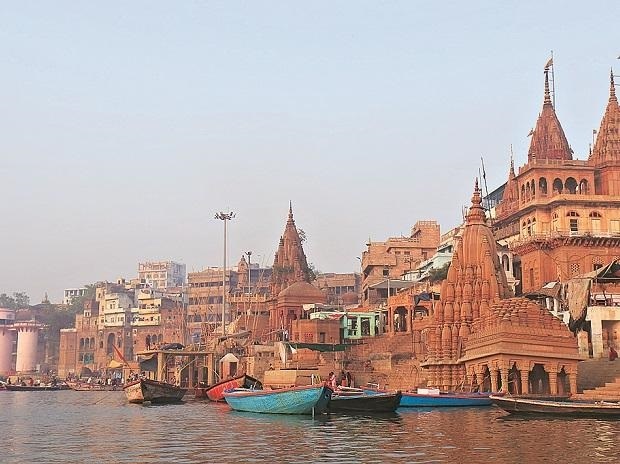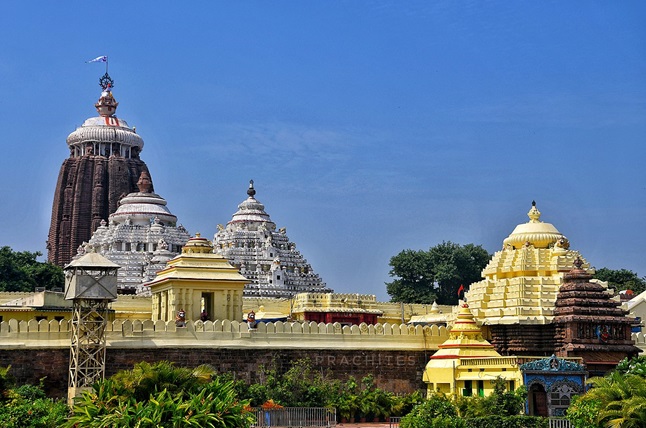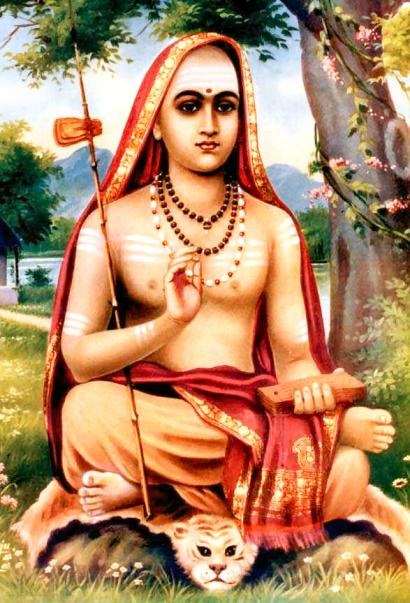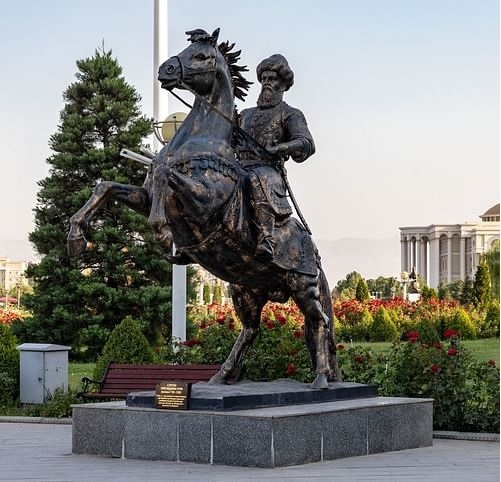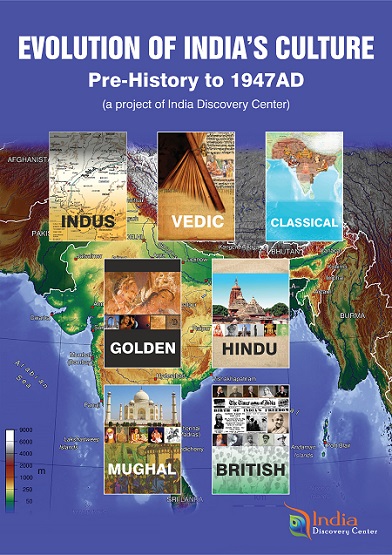India Hindu Period (500CE-1500CE): Introduction
The strong cultural and economic foundation in the Golden Period helped India soar in creativity and prosperity for the next thousand years. The essential teachings of the Vedas and the principles analyzed in Buddhist and Jaina scriptures synthesized a loose federation of belief systems that was labeled as Hinduism. The mispronunciation of Sindhu by the Persians led to the word Hindu through which both the land and the people were identified. Figure 1 gives the picture of Varanasi in the Ganges, a city that thrived as a center of knowledge and religious faith.
Figure 1. Varanasi on the Ganges, a center of knowledge and religious faith. (Wikipedia)
The professional guild system developed during the Golden period degraded into an unwanted hierarchical social structure. Castes and subcastes proliferated. Though strong economy could sustain the multiplicity of groups, social privilege was protected through the genealogical lineage creating an unfortunate inhertance class system. The foreign invaders took advantage of the division in society and the incursions multiplied. India was partially occupied by the Arabic invaders by about thirteenth century. It led top full Moghul occupation in the sixteenth century.
Massive temple monuments with heavy ornamentation stand as testament to the opulence in the period. Development in engineering, mathematics, astronomy and construction methods produced large monument complexes, some like a city by itself. Rust-proof iron beams were used that gave stability to tall structures. Different regions in India developed different art forms, each colorful and spectacular. Figure 2 gives the Jagannatha Temple at Puri, Odisha, a massive monument from the tenth century. Poetry and Literature developed in regional languages that mapped epics and legends to the local geography characterized by the local customs and people.
Figure 2. Jagannatha Temple at Puri, Odisha, A Hindu shrine of tenth century (Wikipedia).
Philosophy took a turn through sectarian commentaries degrading into religious cults. Hindu religion was formulated as ritualistic. Strong fatalism entered the faith system. The caste–ridden society rationalized the caste structure through the cycles of rebirth. Reformers in religion preached, only creating a renunciation of the faith. Figure 3 gives the depicted picture of Shankaracharya, the Hindu mystic of 9th century. Islam was established by the invaders through pressure and terror. Christianity did enter through trade.
Figure 3. Shankaracharya, the Hindu mystic of eighth century (Wikiedia)
Fundamental work in health sciences led to discovery of medicinal herbs and therapeutic treatment of diseases. Development in astronomy led to development in algebra and differential equations. Theories of human speech were explored leading to the foundations of modern Indian classical music. Metallurgy, alloy making, dyes, textiles and silk weaving attained new heights in technique and production. Marine traffic expanded and massive exports became the routine.
The country consisted of regional autonomous kingdoms without a central command. Each region maintained a robust economy through strong production and trade. The kings supported scholarship, education centers, cultural institutions and religious festivals. Life was rich. Occupation of the massive country by a couple of thousand mercenaries impacted the India’s culture for the next five hundred years. Figure 4 gives the statue of Mahammad Ghori from Tazikistan. He is alleged as the first repeat invader to India in twelfth century.
References:
1. The Wonder that was India – A.L.Basham, 1954
2. History of Ancient and Early Medieval India: From the Stone Age to the 12th Century – Upinder Singh, 2009
3. Our Oriental Heritage: The Story of Civilization, Volume 1, Will Durrant, 1935.
4. History and Culture of Indian People, Vol 6, Ed R.C.Majumdar, Bharatiya Vidya Bhavan, 1960.
---------------------------------------------------------------------------------------------------------------------------------------------
Dr. Bijoy Misra serves as the President of India Discovery Center and compiles the project on "Evolution of Indian Culture: Pre-history to 1947AD"
(c) Copyright 2021 India Discovery Center, Inc. All rights reserved.
